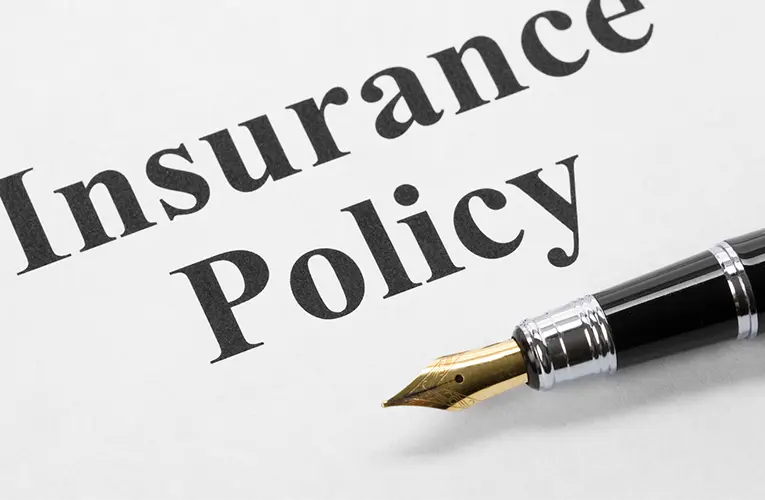Why Insurance Matters: Understanding the Advantages of Being Covered
*Introduction*
Insurance plays a crucial role in mitigating risks and providing financial protection against unforeseen events. This comprehensive guide explores the importance of insurance across various aspects of life and business, highlighting the advantages of having adequate coverage.
*Chapter 1: Fundamentals of Insurance*
**1.1 Definition and Purpose**
– Overview of insurance as a risk management tool.
– Explanation of how insurance works to protect individuals and businesses.
**1.2 Types of Insurance**
– Analysis of different types of insurance, including life, health, property, casualty, and liability.
– Comparative overview of insurance policies and coverage options available.
*Chapter 2: Personal Insurance Benefits*
**2.1 Financial Security and Peace of Mind**
– Exploration of how personal insurance policies provide financial stability during crises.
– Case studies illustrating the importance of health, life, and disability insurance.
**2.2 Protection Against Property Loss**
– Examination of homeowners, renters, and property insurance policies.
– Comparative analysis of coverage limits, deductibles, and additional protections.
*Chapter 3: Business Insurance Essentials*
**3.1 Risk Management for Businesses**
– Overview of business insurance policies, including general liability, professional liability (errors and omissions), and business interruption insurance.
– Case studies of businesses recovering from losses with adequate insurance coverage.
**3.2 Employee Benefits and Welfare**
– Analysis of employer-provided benefits such as health insurance, workers’ compensation, and group life insurance.
– Comparative overview of benefits packages attracting and retaining talent.
*Chapter 4: Legal and Regulatory Considerations*
**4.1 Compliance with Legal Requirements**
– Exploration of insurance requirements mandated by law, such as auto insurance and workers’ compensation.
– Case studies of legal consequences for non-compliance and uninsured businesses.
**4.2 Insurance and Contractual Obligations**
– Analysis of insurance requirements in contracts and agreements.
– Comparative overview of indemnity clauses and insurance provisions in business contracts.
*Chapter 5: Financial Planning and Risk Assessment*
**5.1 Role of Insurance in Financial Planning**
– Overview of how insurance fits into broader financial strategies, including retirement planning and estate management.
– Case studies of financial advisors integrating insurance solutions for clients.
**5.2 Risk Assessment and Coverage Needs**
– Examination of factors influencing insurance coverage decisions, such as asset valuation and personal liabilities.
– Comparative analysis of insurance advisors and tools for assessing coverage adequacy.
*Chapter 6: Insurance Claims and Settlements*
**6.1 Claims Process Overview**
– Exploration of the insurance claims process, from filing to settlement.
– Case studies of successful claims handling and dispute resolution.
**6.2 Role of Insurance Adjusters**
– Analysis of the role of insurance adjusters in assessing claims and determining coverage.
– Comparative overview of public adjusters versus company-appointed adjusters.
*Chapter 7: Emerging Trends and Innovations*
**7.1 Technology in Insurance**
– Overview of InsurTech innovations, such as digital platforms, AI-driven underwriting, and blockchain for secure transactions.
– Case studies of how technology is transforming insurance processes and customer interactions.
**7.2 Sustainability and Insurance**
– Exploration of insurance products addressing environmental risks and sustainability concerns.
– Comparative analysis of green insurance policies and incentives for eco-friendly practices.
*Conclusion*
In conclusion, insurance is not merely a financial safety net but a strategic tool for managing risks, ensuring compliance, and achieving peace of mind in personal and business endeavors. This guide has highlighted the fundamental benefits of insurance across various domains, from protecting assets and liabilities to fostering financial resilience and planning for the future. By understanding these advantages, individuals and businesses can make informed decisions to safeguard their interests and navigate uncertainties effectively.
—
This structure provides a comprehensive framework for your guide, covering essential topics related to insurance while maintaining a clear and informative style suitable for individuals, business owners, and anyone seeking to understand the importance of insurance coverage. Adjust the content and depth as needed to include specific case studies or industry-specific examples relevant to your audience.










